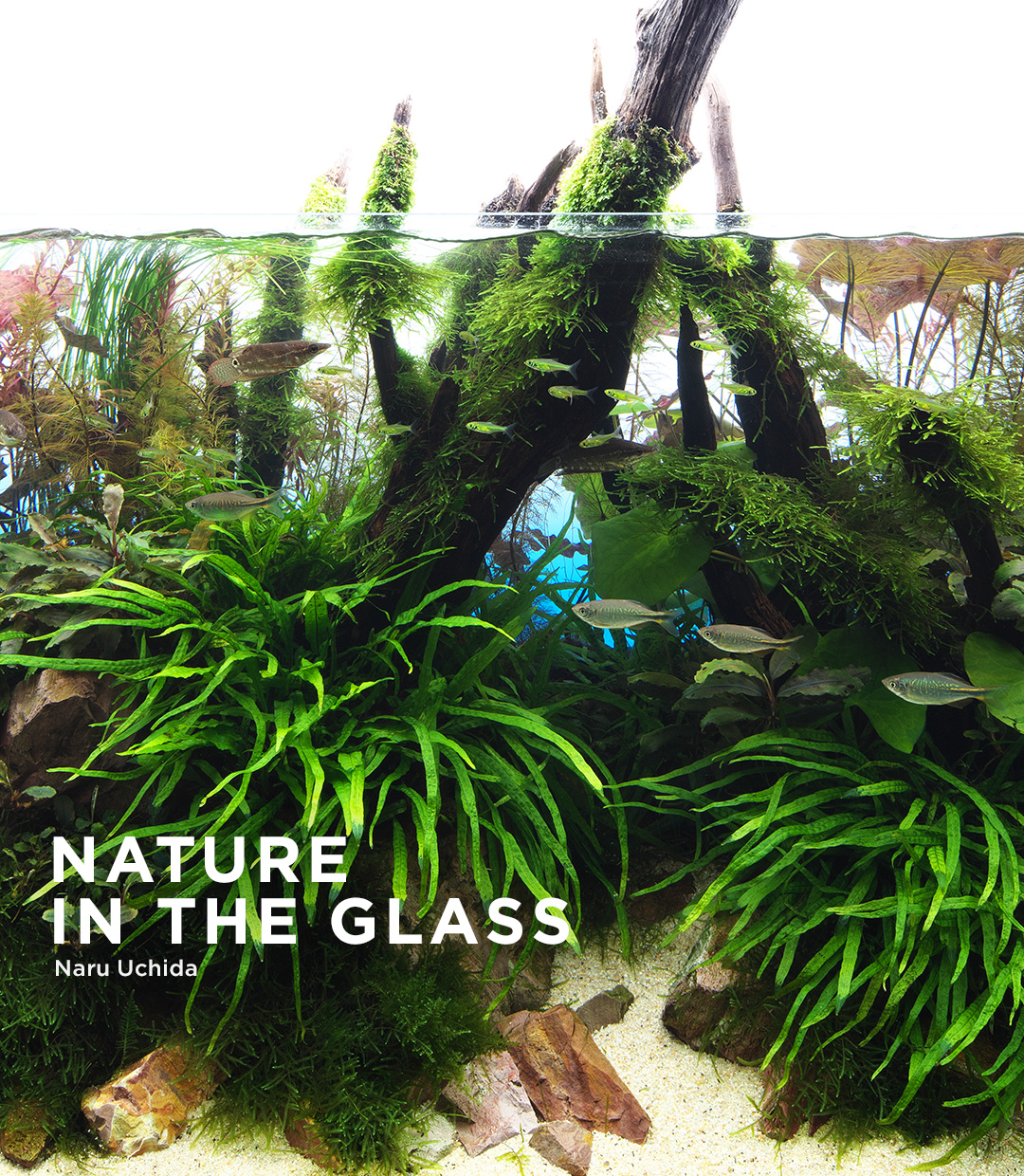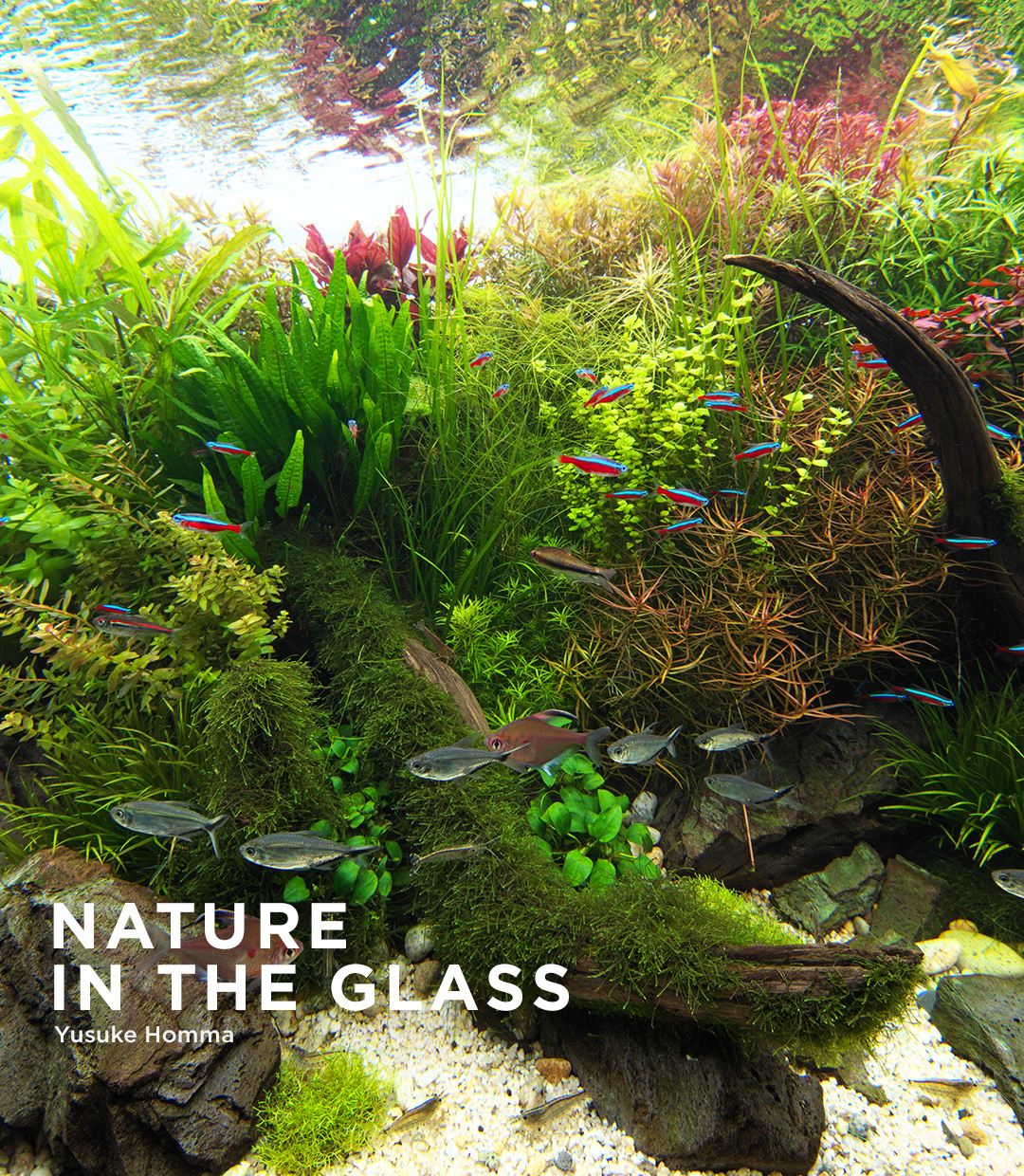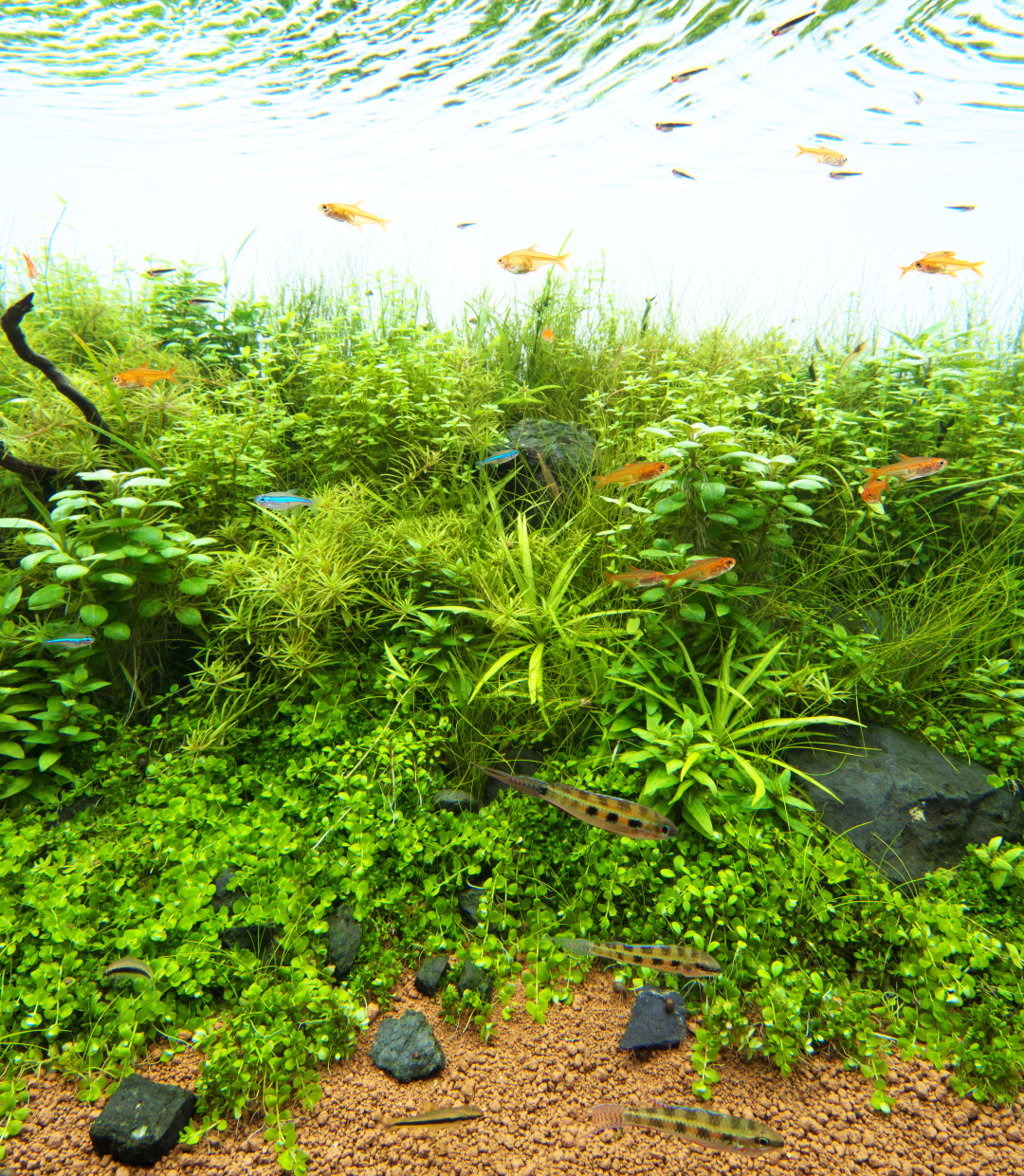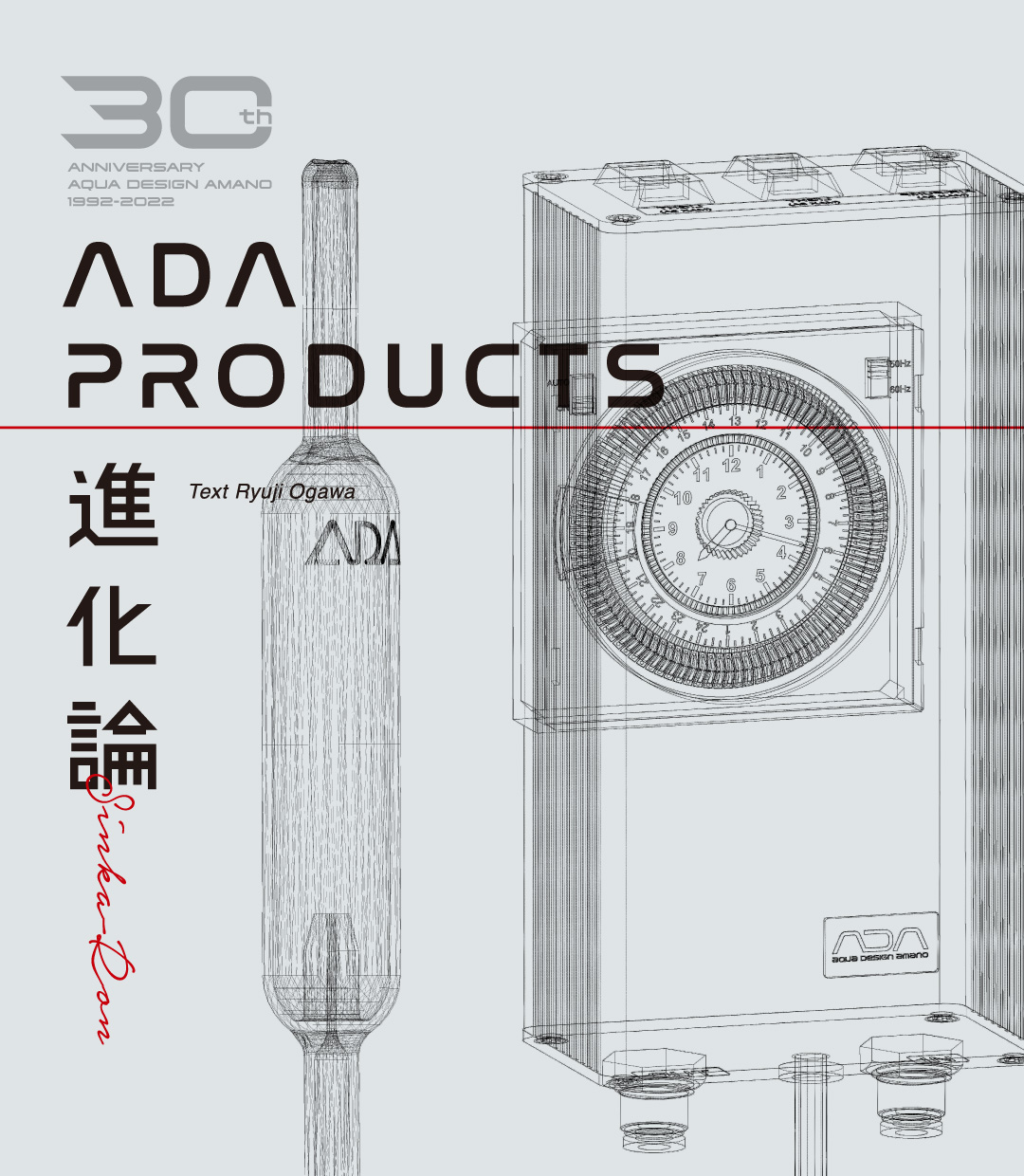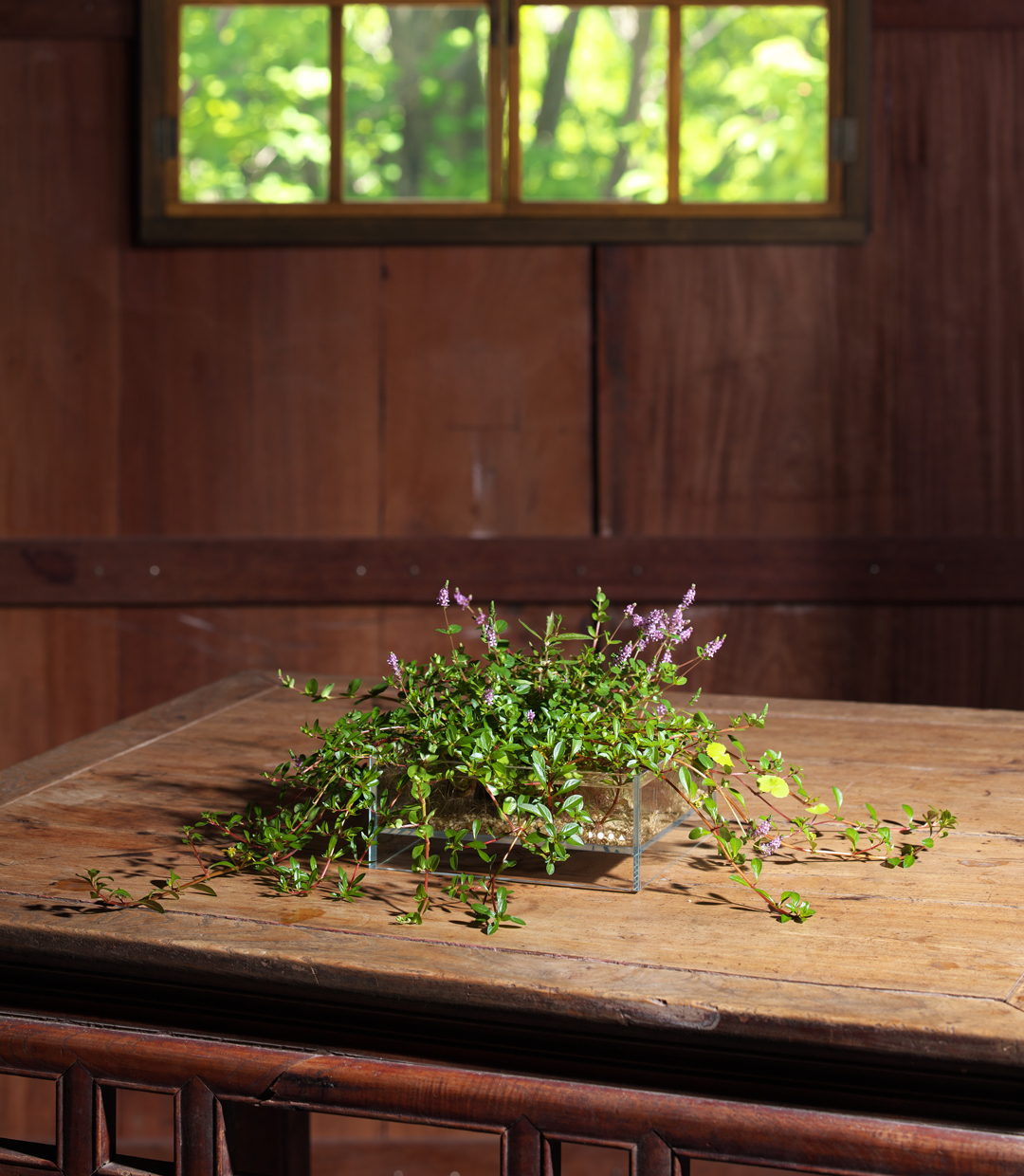HOW TO 2023.06.16
SHITA-KUSA FOCUS
What are the typical aquatic plants used as undergrowth? This question is easy to answer. However, depending on the layout, some of the same aquatic plants may serve more as foreground plants than as undergrowth. So, in what situations does an aquatic plant have the role of an undergrowth? As the word “undergrowth” suggests, it is a plant that is located under, so it is important to know what it is under. In other words, undergrowth is defined as aquatic plants that thrive below the compositional material or background of stem or tape-shaped aquatic plants in the layout and support the expression of nature in the aquascape. In many cases, aquatic plants used as short foreground plants can all be said to serve as undergrowth.
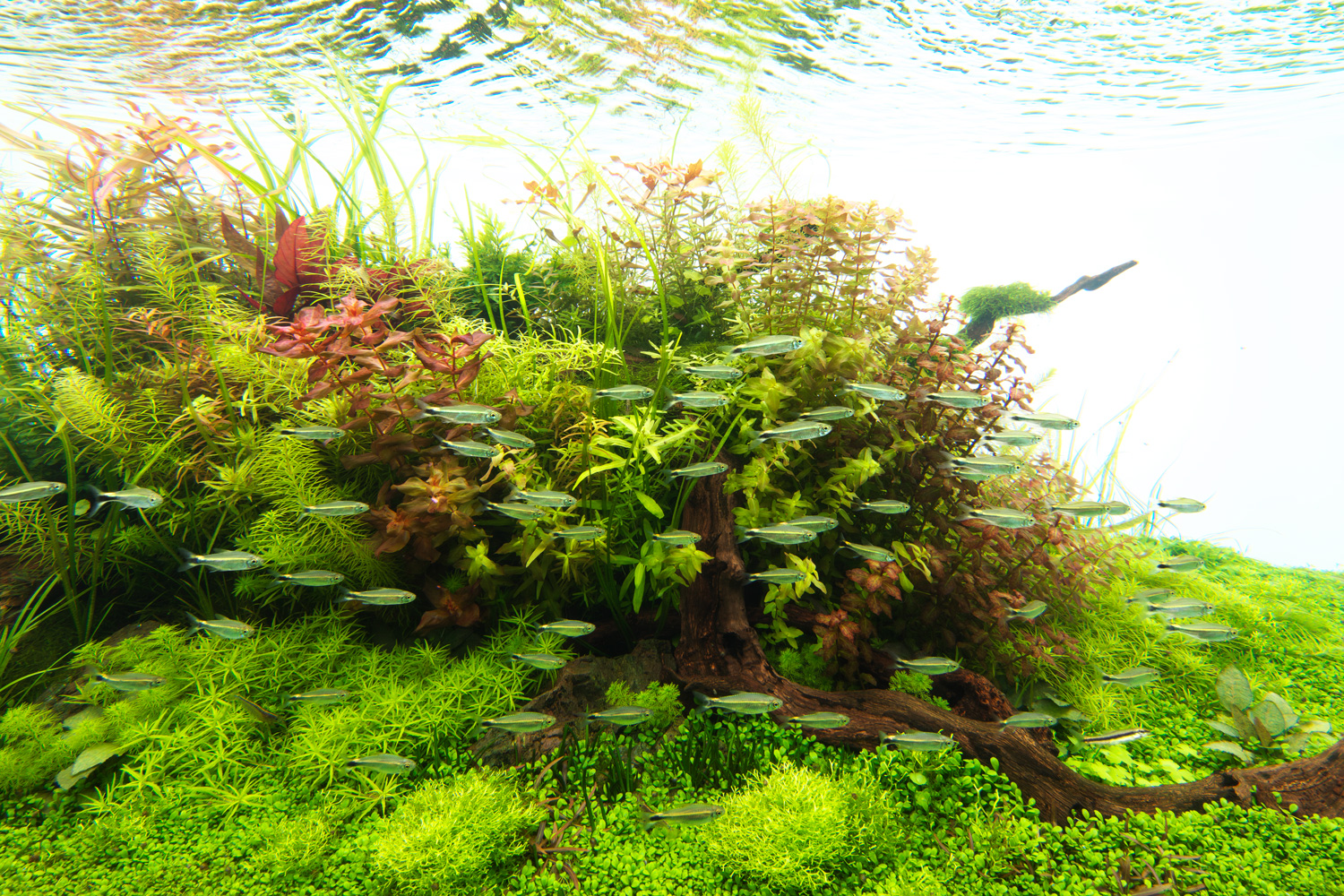
W150×D60×H60(cm)
Presence of undergrowth in forests created by humans
In nature, the plants at the base of trees in a forest, like on the forest floor, are called undergrowth, which includes many herbaceous plants and woody plants that creep up against tall trees. The concept of incorporating the beauty of the natural landscape composition into a layout is both the basis and the essence of the Nature Aquarium.
In nature, the plants at the base of trees in a forest, like on the forest floor, are called undergrowth, which includes many herbaceous plants and woody plants that creep up against tall trees. The concept of incorporating the beauty of the natural landscape composition into a layout is both the basis and the essence of the Nature Aquarium.
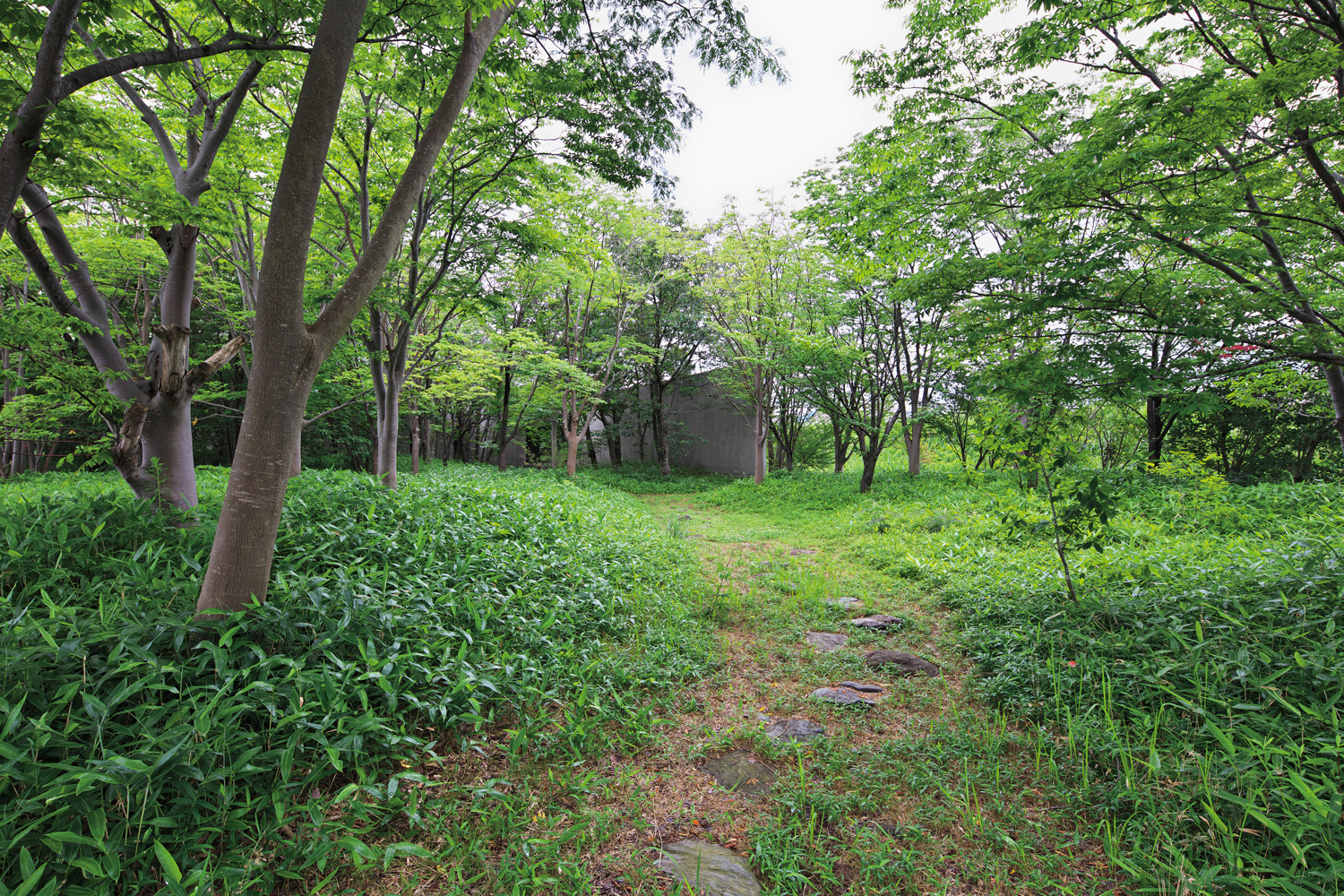
Presence of undergrowth in the aquascape
Typical aquatic plants used as undergrowth are those that are short and proliferate by growing runners, but rosette-type aquatic plants such as Cryptocoryne and Lagenandra can also be undergrowth, depending on the aquarium size and composition. Also, small species or creeping species even among stem plants can also have an undergrowth role. In the situations described here, each aquatic plant is planted as an undergrowth and makes up the aquascape.
Typical aquatic plants used as undergrowth are those that are short and proliferate by growing runners, but rosette-type aquatic plants such as Cryptocoryne and Lagenandra can also be undergrowth, depending on the aquarium size and composition. Also, small species or creeping species even among stem plants can also have an undergrowth role. In the situations described here, each aquatic plant is planted as an undergrowth and makes up the aquascape.
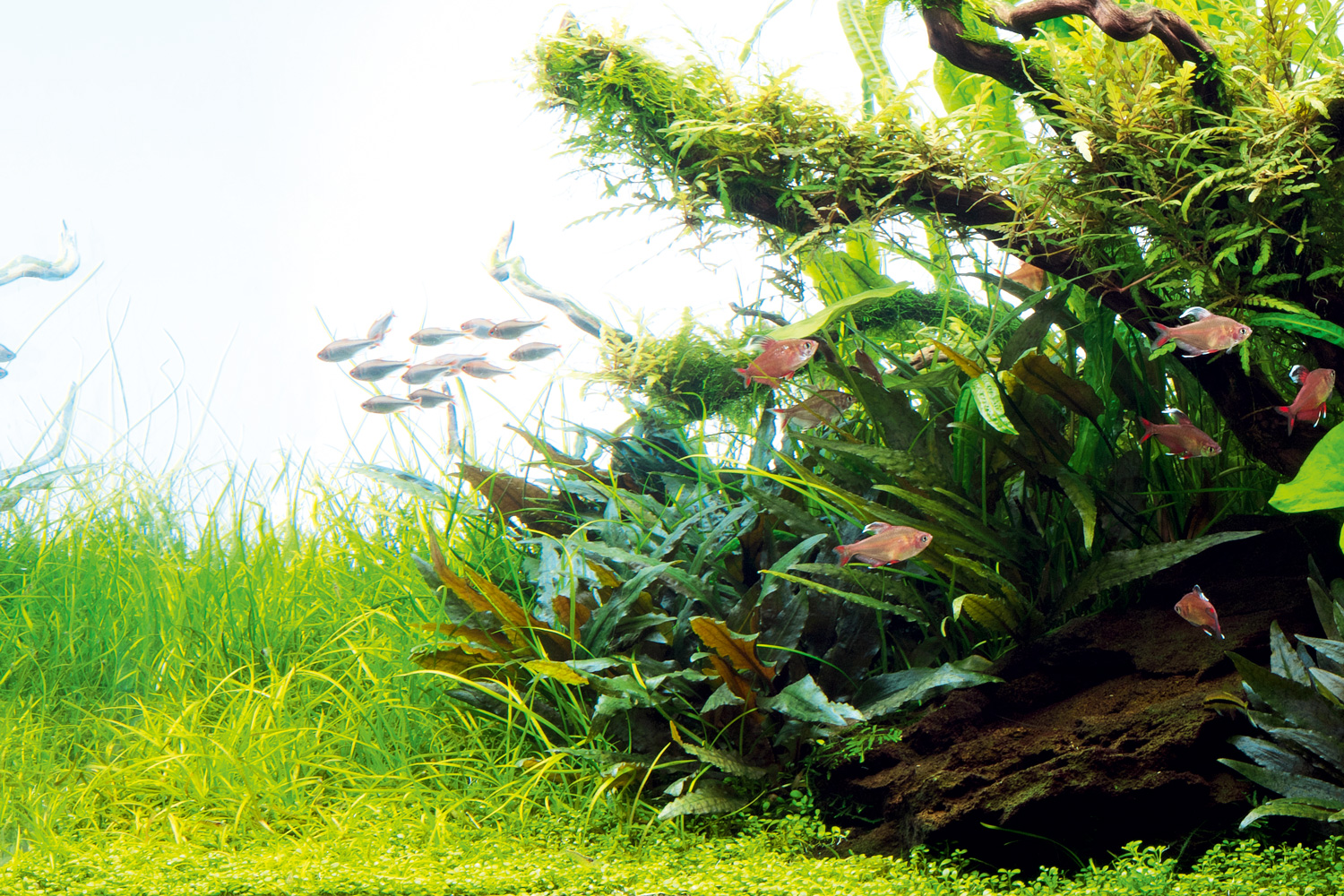
Glossostigma elatinoides / Helanthium tenellum
The mix of Glossostigma elatinoides and Helanthium tenellum clumps is further enhanced by the Cryptocoryne that is planted as if it were nestled among driftwood. The upper space not only expresses depth, but also serves as a swimming space for fish.
W150 x D60 x H60 (cm) Published in AJ vol. 329
The mix of Glossostigma elatinoides and Helanthium tenellum clumps is further enhanced by the Cryptocoryne that is planted as if it were nestled among driftwood. The upper space not only expresses depth, but also serves as a swimming space for fish.
W150 x D60 x H60 (cm) Published in AJ vol. 329
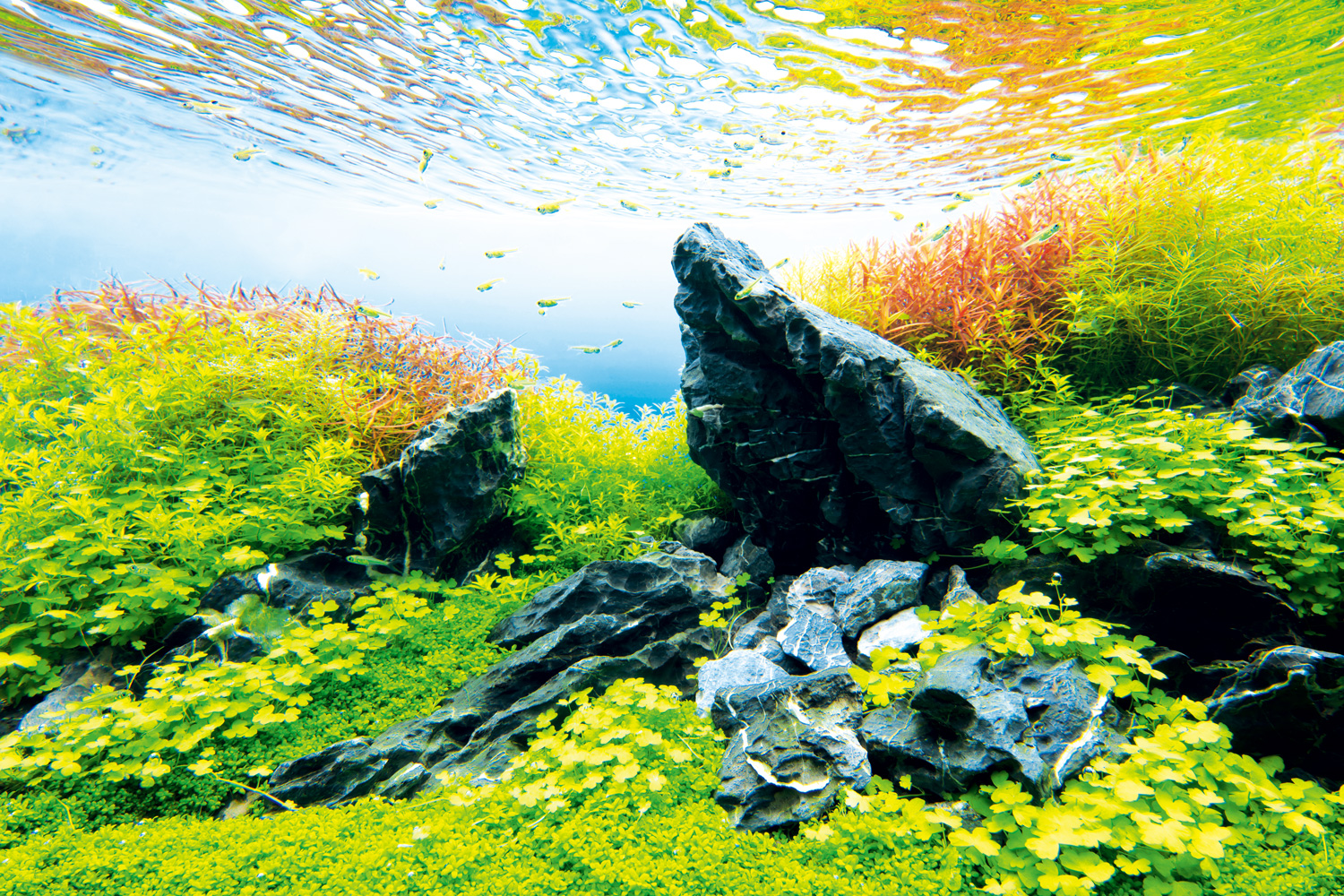
Hemianthus callitrichoides ‘Cuba’ / Hydrocotyle tripartita
The aquascape has depth due to the Hemianthus callitrichoides ‘Cuba cluster from the front to the back center. Hydrocotyle tripartita placed at the edge of the stones soften the roughness of the scenery and increase the sense of unity of the entire aquascape, including the stem plants.
W60 x D30 x H36 (cm) Published in AJ vol. 286
The aquascape has depth due to the Hemianthus callitrichoides ‘Cuba cluster from the front to the back center. Hydrocotyle tripartita placed at the edge of the stones soften the roughness of the scenery and increase the sense of unity of the entire aquascape, including the stem plants.
W60 x D30 x H36 (cm) Published in AJ vol. 286
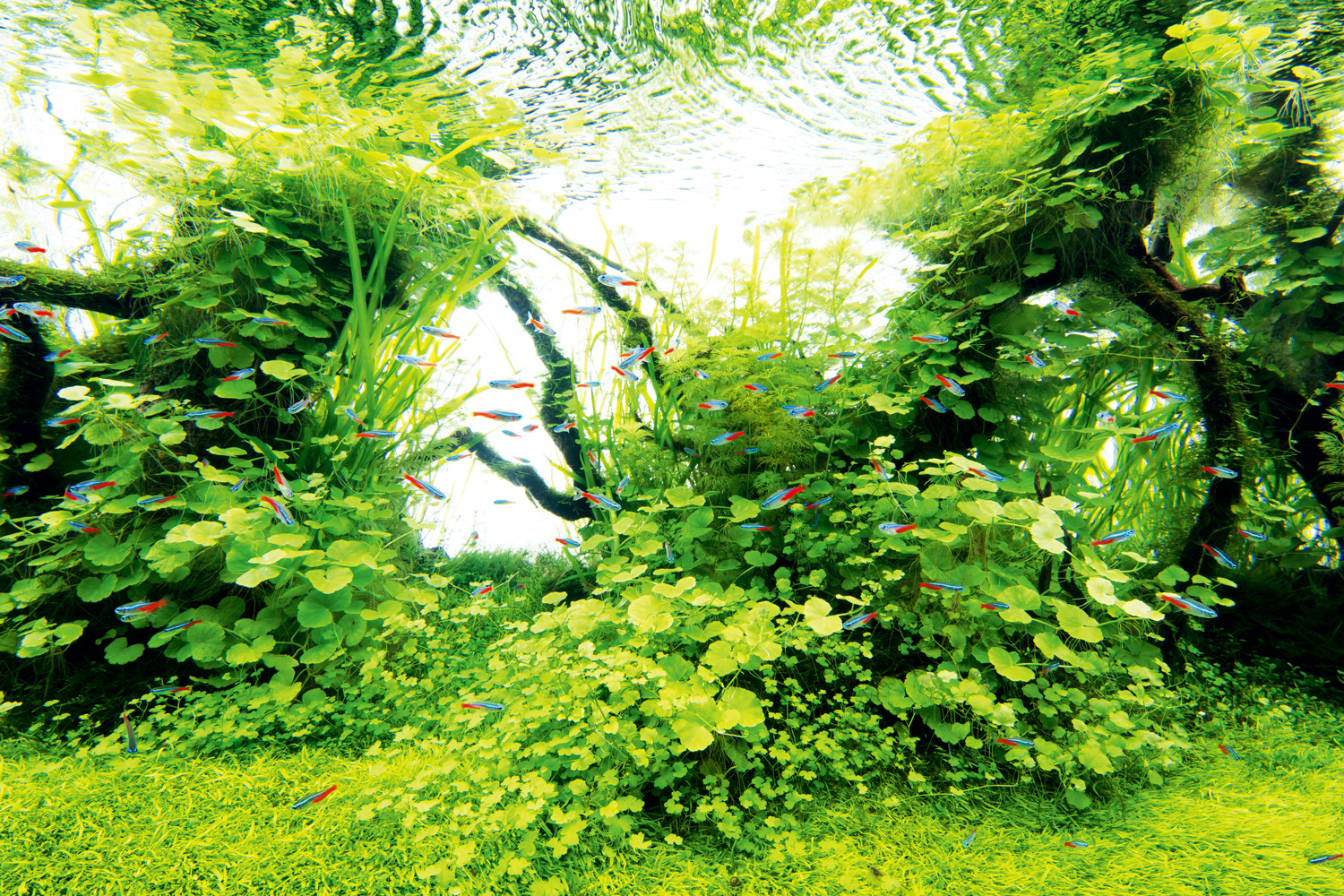
Utricularia graminifolia / Cardamine lyrata Bunge / Hydrocotyle tripartita etc.
The Utricularia graminifolia that covers the entire surface of the composition, even between the compositional framework, and the bright aquatic plants such as Cardamine lyrata Bunge and Hydrocotyle tripartita that crawl along the driftwood base, establish a fantastic undergrowth space as if the denseness had been eliminated by their colors.
W180 x D60 x H60 (cm) Published in AJ 305
The Utricularia graminifolia that covers the entire surface of the composition, even between the compositional framework, and the bright aquatic plants such as Cardamine lyrata Bunge and Hydrocotyle tripartita that crawl along the driftwood base, establish a fantastic undergrowth space as if the denseness had been eliminated by their colors.
W180 x D60 x H60 (cm) Published in AJ 305
“Wabi-Kusa” and “BIO Mizukusa no Mori” suitable for undergrowth
In a hierarchical layout such as a Dutch aquarium in which aquatic plants are planted according to their height, they are arranged according to their size (low, medium, high), starting from the front, but in a Nature Aquarium, undergrowth is often used for planting in the spatial part, which is also important in the three basic compositions. By planting short plants in the center and in the back of the aquarium, it is possible to express the depth and beauty of the composition of a natural landscape. Here, we pick up and introduce some of the suitable species for undergrowth from the Wabi-Kusa and BIO Mizukusa no Mori lineups. Why don’t you enjoy growing aquatic plants while focusing on “undergrowth” that actually makes a large contribution to your aquarium, just as nature extends to your feet?
In a hierarchical layout such as a Dutch aquarium in which aquatic plants are planted according to their height, they are arranged according to their size (low, medium, high), starting from the front, but in a Nature Aquarium, undergrowth is often used for planting in the spatial part, which is also important in the three basic compositions. By planting short plants in the center and in the back of the aquarium, it is possible to express the depth and beauty of the composition of a natural landscape. Here, we pick up and introduce some of the suitable species for undergrowth from the Wabi-Kusa and BIO Mizukusa no Mori lineups. Why don’t you enjoy growing aquatic plants while focusing on “undergrowth” that actually makes a large contribution to your aquarium, just as nature extends to your feet?
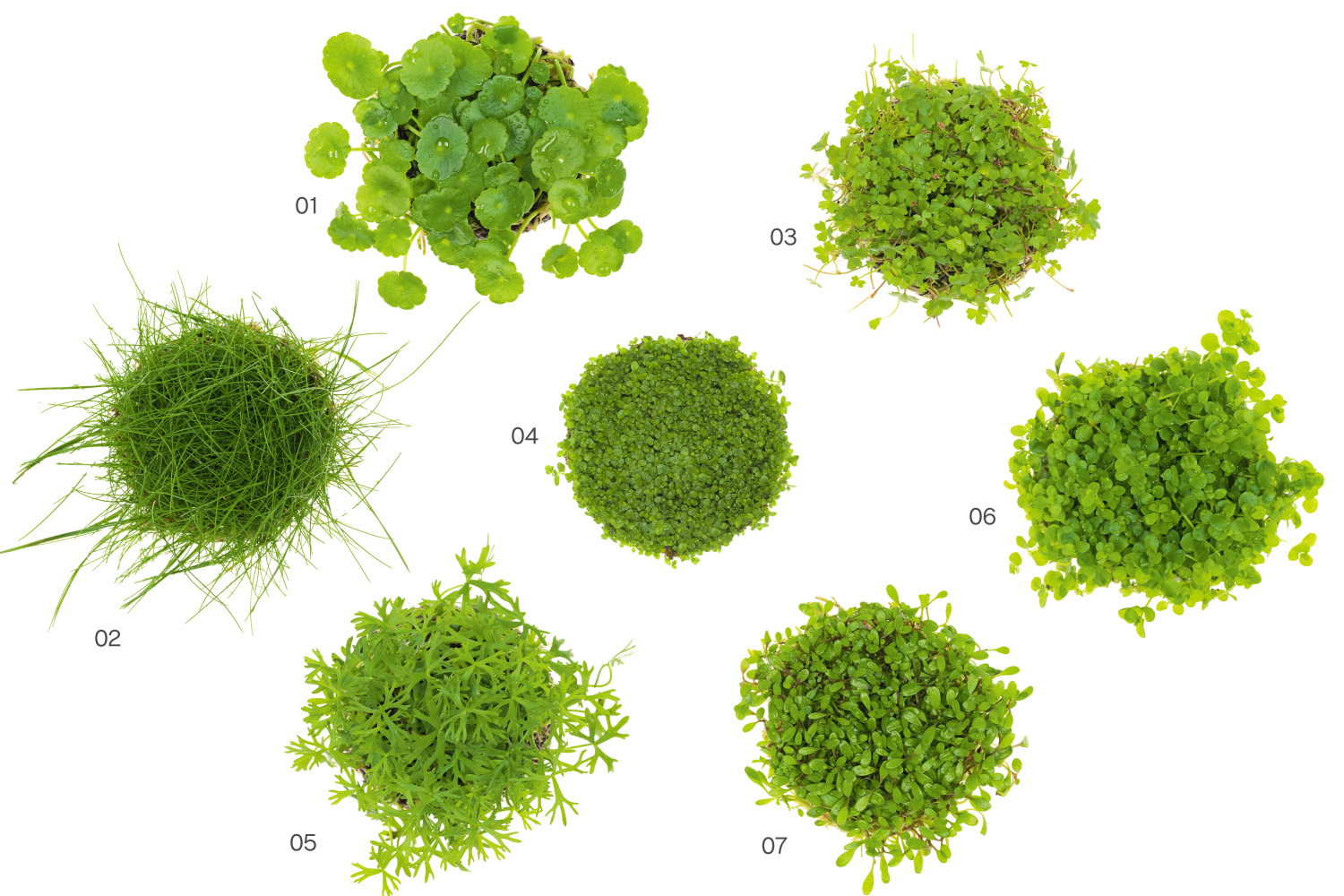
01. Wabi-Kusa Hydrocotyle verticillata 5Ø
It can proliferate on runners and develop leaves through gaps in the material, increasing its natural look.
02. Wabi-Kusa Eleocharis parvula 5Ø
Its low stature makes it easy to handle, and the density can be adjusted to express freshness and weediness.
03. Wabi-Kusa Hydrocotyle tripartita 5Ø
Its fine leaves and vine-like appearance give it a wild look.
04. Wabi-Kusa Hemianthus callitrichoides ‘Cuba’ 5Ø
Wabi-Kusa can be densely planted simply by placing it, although stable propagation requires a certain amount of skill.
05. Wabi-Kusa Ranunculus inundatus 5Ø
Its parted leaves can add a unique touch if mixed with other undergrowth.
06. Wabi-Kusa Micranthemum sp. 5Ø
The dense, spreading clumps of round leaves give a soft impression of under-growth expression.
07. Wabi-Kusa Glossostigma elatinoides 5Ø
It is a representative species of undergrowth that is grown at high densities and spreads quickly.
It can proliferate on runners and develop leaves through gaps in the material, increasing its natural look.
02. Wabi-Kusa Eleocharis parvula 5Ø
Its low stature makes it easy to handle, and the density can be adjusted to express freshness and weediness.
03. Wabi-Kusa Hydrocotyle tripartita 5Ø
Its fine leaves and vine-like appearance give it a wild look.
04. Wabi-Kusa Hemianthus callitrichoides ‘Cuba’ 5Ø
Wabi-Kusa can be densely planted simply by placing it, although stable propagation requires a certain amount of skill.
05. Wabi-Kusa Ranunculus inundatus 5Ø
Its parted leaves can add a unique touch if mixed with other undergrowth.
06. Wabi-Kusa Micranthemum sp. 5Ø
The dense, spreading clumps of round leaves give a soft impression of under-growth expression.
07. Wabi-Kusa Glossostigma elatinoides 5Ø
It is a representative species of undergrowth that is grown at high densities and spreads quickly.
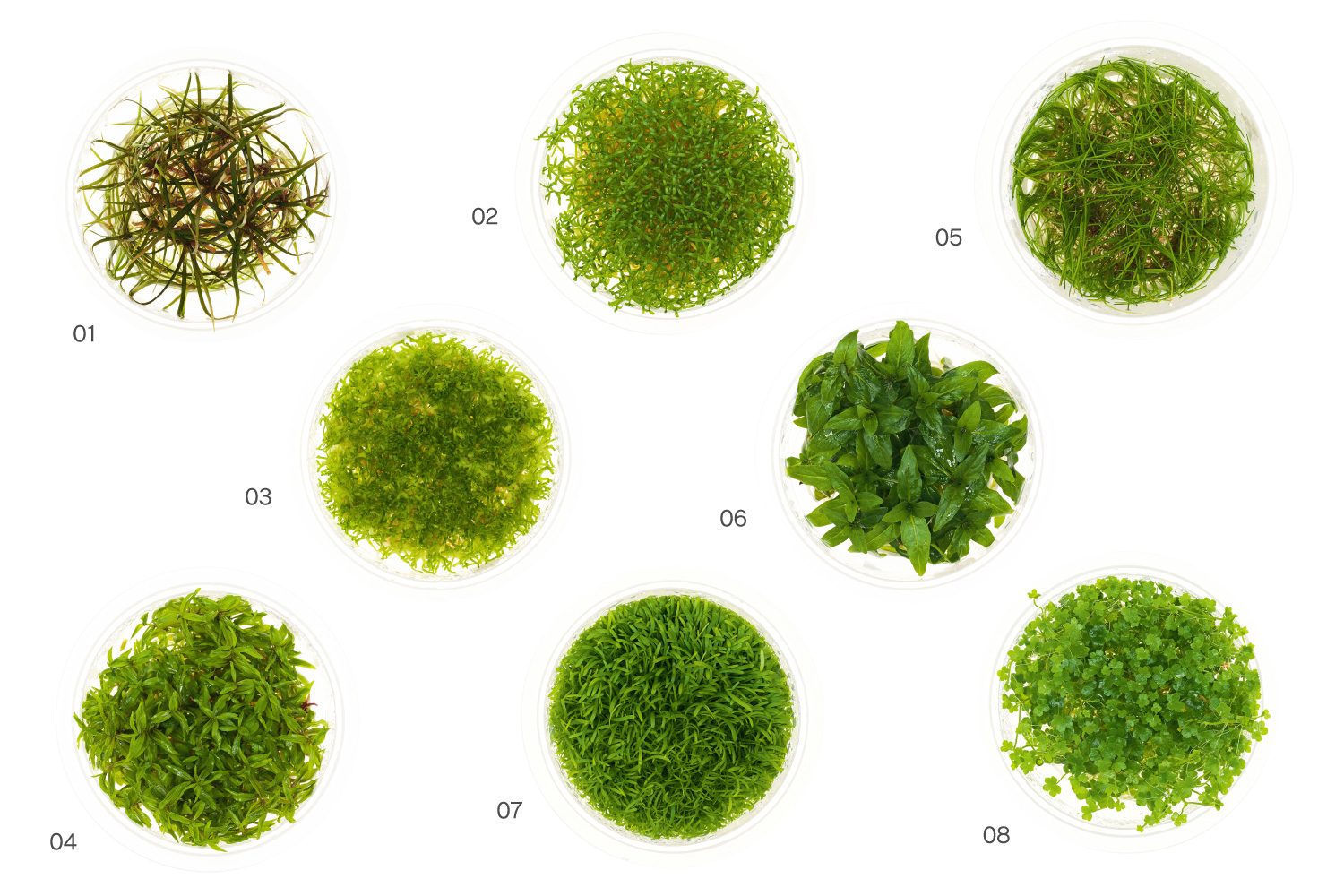
01. BIO Mizukusa no Mori Helanthium tenellum
It can be planted singly or as a point plant to express natural look with its long, slender form.
02. BIO Mizukusa no Mori Microcarpaea minima
It spreads delicately with fine leaf stalks, but can grow obliquely in the right environment.
03. BIO Mizukusa no Mori Riccia fluitans
It is easy to have bubbles of photosynthesis, which makes it different from other undergrowth.
04. BIO Mizukusa no Mori Limnophila helferi
It can be used as an undergrowth that grows thickly due to its creeping nature.
05. BIO Mizukusa no Mori Eleocharis acicularis
Because of its slightly taller height, the planting position should be determined according to the size of the aquarium.
06. BIO Mizukusa no Mori Staurogyne repens
It grows slowly for a stem plant, making it easy to maintain the aquascape.
07. BIO Mizukusa no Mori Utricularia graminifolia
It can easily proliferate at high densities and can be used as a single forest floor in pale yellow-green.
08. BIO Mizukusa no Mori Hydrocotyle tripartita ‘Mini’
It spreads over other undergrowth and materials to cover with runners.
It can be planted singly or as a point plant to express natural look with its long, slender form.
02. BIO Mizukusa no Mori Microcarpaea minima
It spreads delicately with fine leaf stalks, but can grow obliquely in the right environment.
03. BIO Mizukusa no Mori Riccia fluitans
It is easy to have bubbles of photosynthesis, which makes it different from other undergrowth.
04. BIO Mizukusa no Mori Limnophila helferi
It can be used as an undergrowth that grows thickly due to its creeping nature.
05. BIO Mizukusa no Mori Eleocharis acicularis
Because of its slightly taller height, the planting position should be determined according to the size of the aquarium.
06. BIO Mizukusa no Mori Staurogyne repens
It grows slowly for a stem plant, making it easy to maintain the aquascape.
07. BIO Mizukusa no Mori Utricularia graminifolia
It can easily proliferate at high densities and can be used as a single forest floor in pale yellow-green.
08. BIO Mizukusa no Mori Hydrocotyle tripartita ‘Mini’
It spreads over other undergrowth and materials to cover with runners.
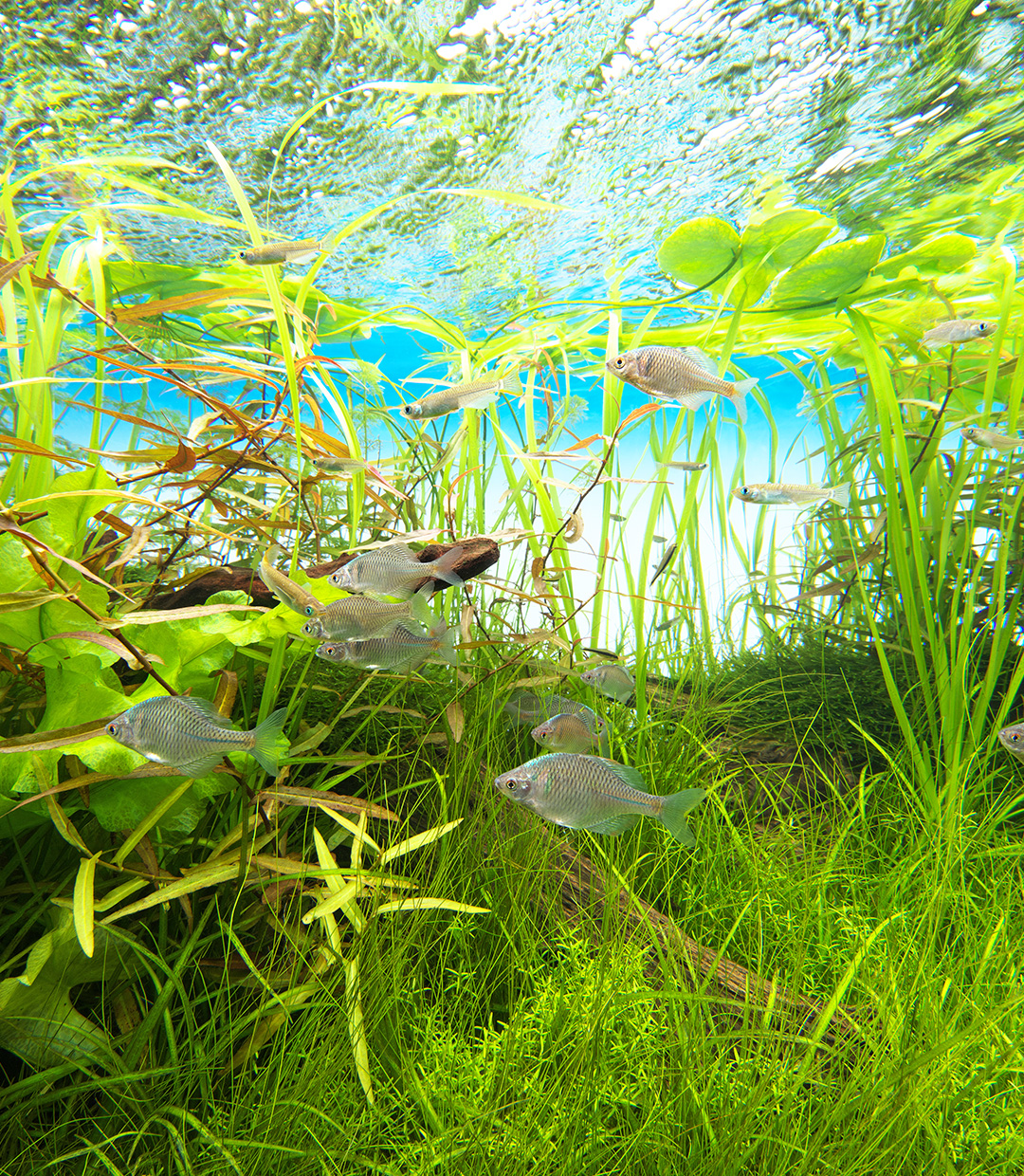
![[ STYLE OF EPIPHYTIC PLANTS ] Effective use of epiphytic aquatic plants in layout scenes](https://www.adana.co.jp/wp-content/uploads/sites/3/2024/04/ep_img_ogp.jpg)
